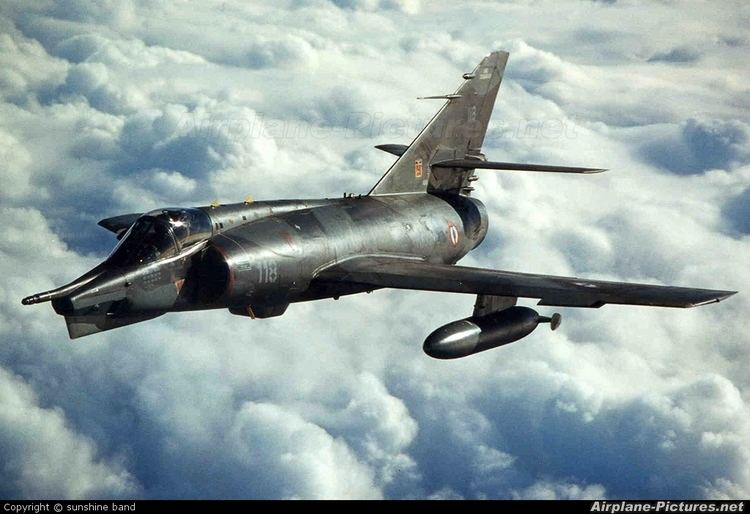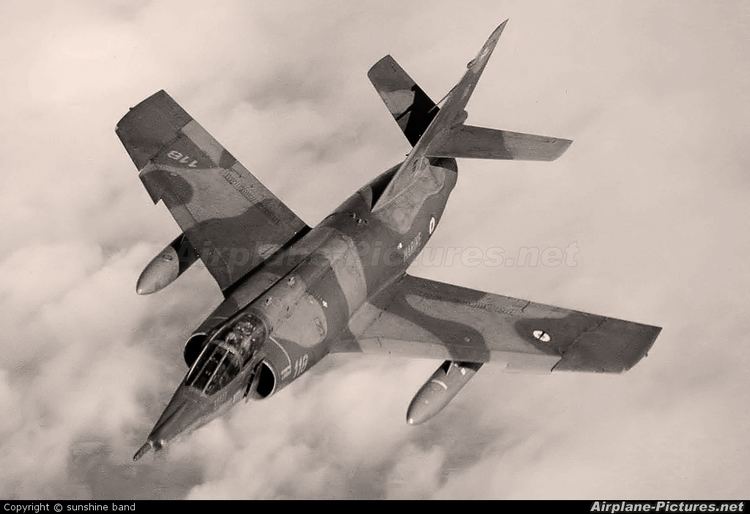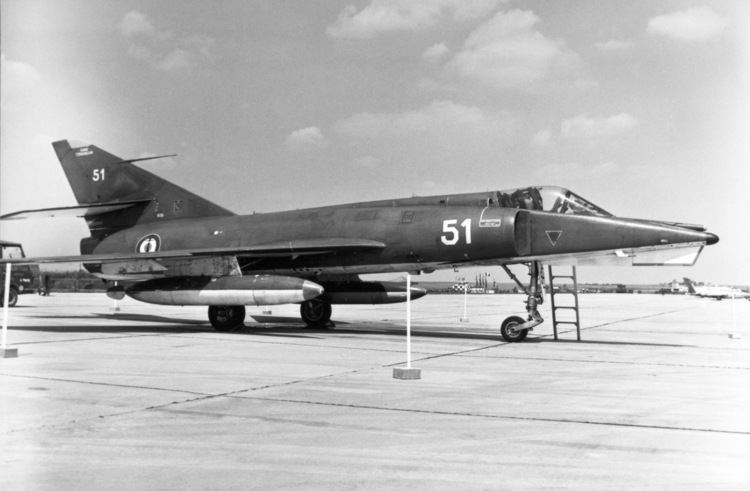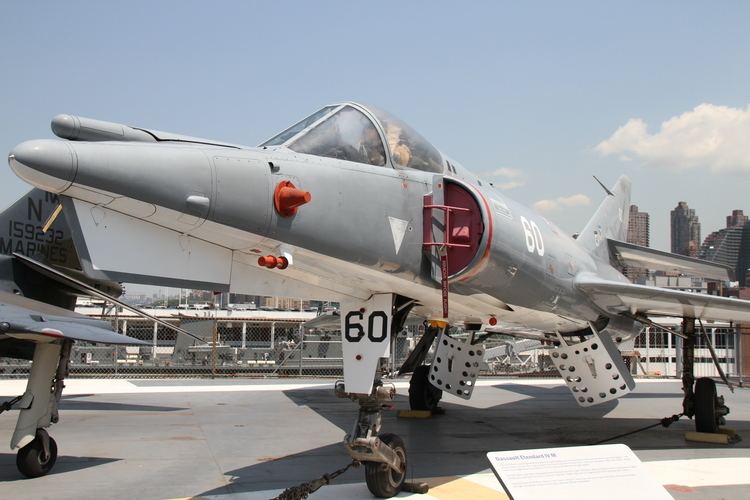Top speed 1,099 km/h Length 14 m Engine type Snecma Atar | Wingspan 9.6 m Introduced 1962 First flight 1958 | |
 | ||
Dassault tendard iv french naval strike aircraft
The Dassault Étendard IV was a subsonic carrier-borne strike fighter aircraft, which entered service with the French Navy in 1962. It served as the basis for the more advanced Dassault-Breguet Super Étendard. During the 1970s, it had been intended to replace the Étendard IV with a navalised version of the SEPECAT Jaguar, designated as the Jaguar M. However, development of the Jaguar M was cancelled and shortly after replaced by the Super Étendard. The Étendard IV was progressively withdrawn during the 1980s and finally retired from service with its sole operator in 1991.
Contents
- Dassault tendard iv french naval strike aircraft
- Fsx dassault tendard iv
- Development
- Design
- Variants
- Operators
- Specifications Dassault tendard IVM
- References

Fsx dassault tendard iv
Development

The Étendard's history began with two different design requirements in the early 1950s for light fighters, one for the French Air Force and the other for NATO air forces. Dassault used the same basic design for both these specifications, designated as the Étendard II and Étendard VI respectively, neither of which received any orders. The company also developed a larger and more powerful variant, which was originally designated as the Mystère XXIV, simultaneously as a private venture.

The French Navy showed interest in the more powerful aircraft, which led to Dassault constructing a prototype navalized version; this first prototype conducted its first flight on 24 July 1956. Sufficiently satisfied with its performance, the French Navy procured 69 Étendard IVM fighters and 21 Étendard IVP reconnaissance versions. From 1962, these were being deployed aboard the service's newly built Clemenceau-class aircraft carriers, the Clemenceau and Foch.

The Jaguar M, a navalized variant of the Anglo-French SEPECAT Jaguar, was intended to be the Étendard's replacement, but this effort was derailed by political lobbying by Dassault, who favoured their own proposed upgraded version of the aircraft, which would later enter service as the Super Étendard. The original Étendard was retired from carrier service in 1980, and was phased out from active roles in 1987.
Design

The Étendard was a naval light attack fighter, which in service was often recognized for its popularity with its pilots due to its maneouverability. It had a highly swept foldable wing, which featured double-slotted flaps and spoilers, as well as powered ailerons and leading edge droop flaps. It was powered by the SNECMA Atar engine, which had also powered the French Air Force's Dassault Mirage III. The configuration was broadly similar with the exception of the removed afterburner. The Étendard was capable of transonic speeds, being only able to exceed the speed of sound when in a dive.

The Étendard could be furnished with various equipment to carry out its mission roles, which included attack, photo-reconnaissance, and aerial refueling tanking. In addition to the commonly fitted 30mm DEFA cannon, various armaments and munitions could be carried on the four wing hardpoints, such as Nord 5103 air-to-air missiles, rocket pods, bombs, and drop tanks. A retractable nose-mounted refueling probe was also fitted. Other optional equipment included a Tacan receiver and a braking parachute for land operations. A compact Dassault Aida radar was installed in the nose, along with a small infrared sensor for guiding munitions.
Variants
Operators
Specifications (Dassault Étendard IVM)
General characteristics
Performance
Armament
